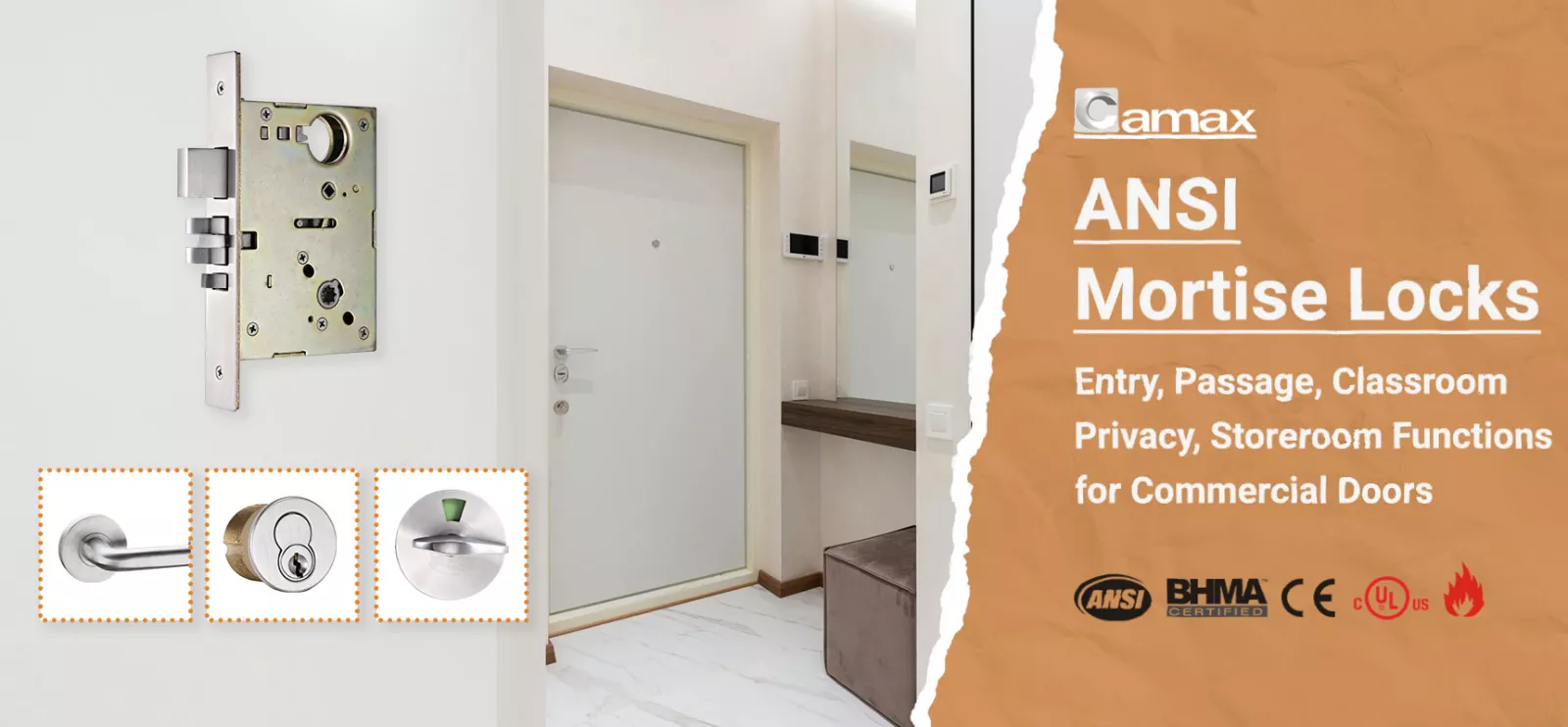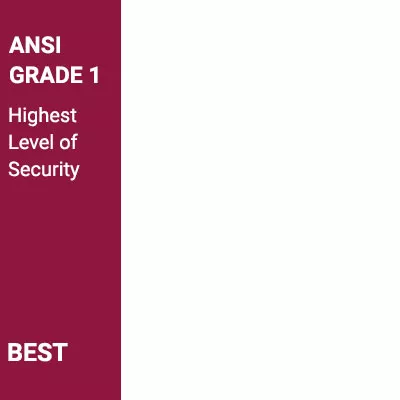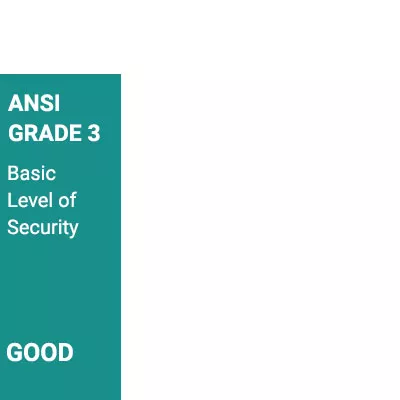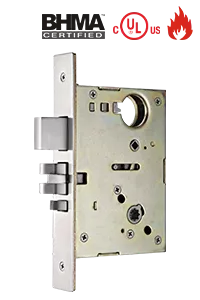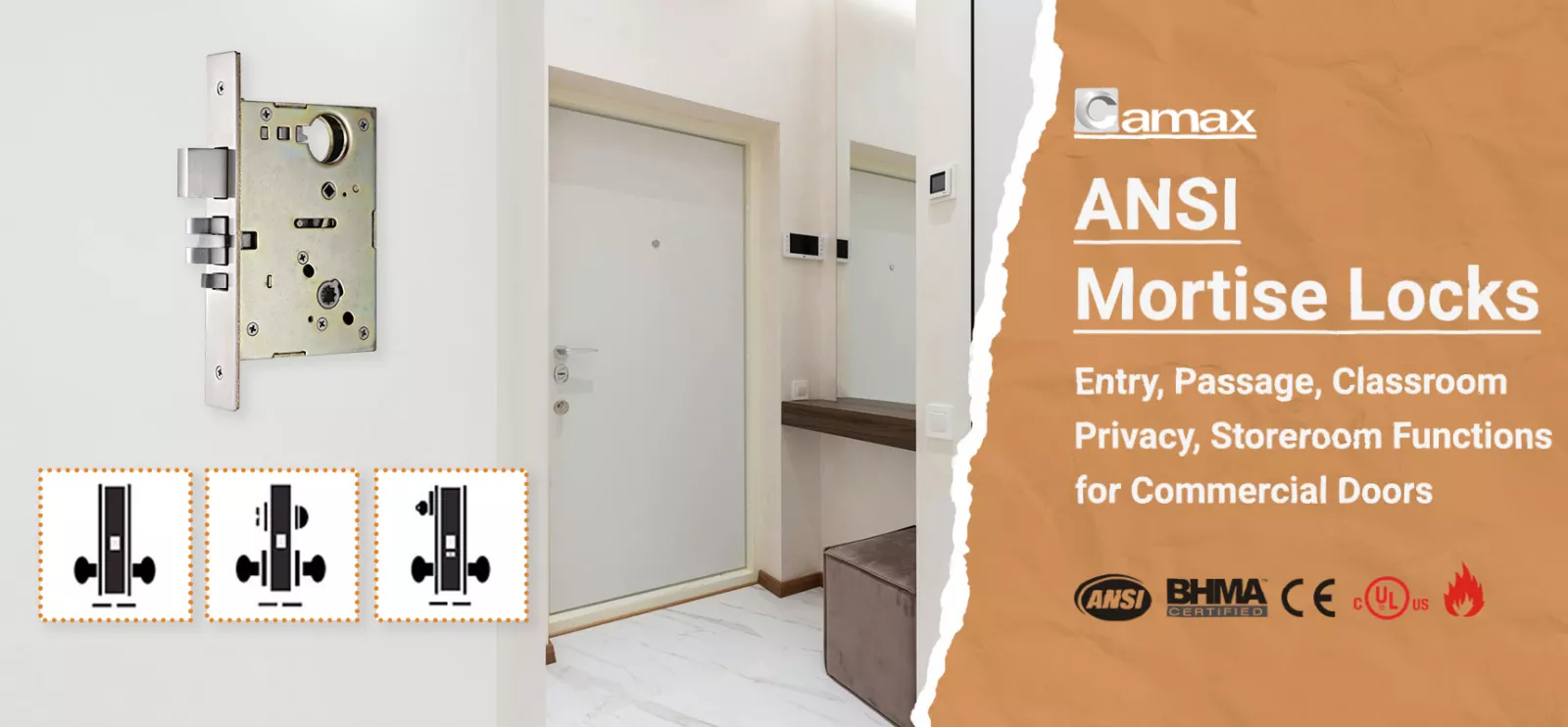
When it comes to securing your commercial property, the choice of locks is paramount. ANSI mortise locks are one of the most trusted solutions, providing a balance between durability, security, and functionality. Whether you're outfitting office buildings, schools, hospitals, or other commercial spaces, selecting the right ANSI mortise lock function is essential for ensuring both safety and convenience.
In this article, we’ll guide you through the various ANSI mortise lock functions and help you make an informed decision on which one is best suited for your commercial project. From securing high-traffic entrances to ensuring private spaces remain confidential, we’ll explore how the right lock can optimize both security and user experience.
Table of contents
What is an ANSI Mortise Lock?
An ANSI mortise lock is a type of lockset installed into a pocket (or "mortise") cut into the door, making it a highly secure option for commercial buildings. ANSI, or the American National Standards Institute, defines the grading system for locks based on their performance, ensuring that each lock meets specific criteria for strength, durability, and security.
ANSI Grade 1
Designed for over 1 million cycles, offering maximum durability and security.
ANSI Grade 2
Tested for 500,000 cycles, ideal for offices and schools with moderate traffic.
ANSI Grade 3
Acceptable for residential-grade and light commercial use.
Camax's ANSI Mortise Lock CML800 Series offers a wide range of functions with ANSI Grade 1 certification, ensuring high security for various commercial buildings. These locks are built to withstand heavy use while offering customizable features based on your specific needs.
- • ANSI commercial mortise locks
- • Certificate: BHMA listed; ANSI/BHMA A156.13-2020, Grade 1 (1, 000, 000); UL10C 3-hour fire rating.
- • Lockcase: Heavy-gauge steel, with zinc dichromate finish for corrosion resistance.
- • Deadbolt: One-piece stainless steel, 25mm throw.
- • Latchbolt: Stainless steel, 2 pieces mechanical with anti-friction insert, 19mm throw.
- • Auxiliary Latchbolt: stainless steel.
- • Strike: stainless steel, ANSI straight lip standard 4-7/8" (124mm) x 1-1/4" (32mm).
- • Door thickness: 1-3/4" (45mm) standard. Optional 1-3/8" (35mm), 2-1/2" (64mm).
- • Backset: 2 3/4" (70mm).
Understanding ANSI Mortise Lock Functions
ANSI mortise locks come with different functions, allowing you to choose the one that best fits the needs of your commercial building. Here are the most common functions.
1. Entry Function
The entry function requires a key to lock or unlock the door from the outside, while the inside lever always allows for easy exit. It is ideal for main entrances, office doors, and secured areas where controlled access is necessary.
| Outside/Inside | SKU | Type | ANSI | Function Description |
|---|---|---|---|---|
 |
CML804 | Office and Inner Entry Lock | F04 | Latch bolt operated by lever from either side except when outside lever is made inoperative by thumbturn or key. When the outside lever is locked, the latch bolt is retracted by key from the outside or by operating the inside lever. Auxiliary dead latch. |
 |
CML809 | Apartment Entrance Lock | F09 | Latch bolt operated by lever from either side, except when outside lever is locked by key from inside. When outside lever is locked, latch bolt is retracted by the key from the outside or by operating the inside lever. Auxiliary dead latch. |
 |
CML820 | Entrance Lock | F20 | Latch when outside from either side, except when the outside lever is made inoperative by thumbturn. Deadbolt operated by key outside or turn inside. The key outside operates both bolts. The operating inside lever retracts both bolts and the outside remains locked. The latch bolt is dead-locked when the outside lever is made inoperative or when the deadbolt is projected. When deadbolt is retracted, the lever is unlocked by thumbturn. |
2. Passage Function
This passage function is perfect for doors that don’t require locking, such as interior office doors or hallways. These locks allow free movement in both directions, making them ideal for high-traffic areas.
| Outside/Inside | SKU | Type | ANSI | Function Description |
|---|---|---|---|---|
 |
CML801 | Passage Latch | F01 | Latch bolt operated by lever from either side at all times. |
| CML831 | Exit or Communicating Lock | F31 | Latch bolt operated by lever from inside. Non-removable blank trim or no trim outside. |
3. Privacy Function
Common in bathrooms or private offices, the privacy function allows individuals to lock the door from the inside via thumbturn or push-button for privacy. However, it can be opened from the outside in an emergency, ensuring safety in critical situations.
| Outside/Inside | SKU | Type | ANSI | Function Description |
|---|---|---|---|---|
 |
CML802 | Privacy, Bedroom or Bath Lock | F22 | Latch bolt retracted by knob/lever from either side unless outside is locked by inside thumbturn or outside coin turn. Operating the inside knob/lever, closing the door, rotating the inside thumbturn, or rotating the outside coin turn unlocks the outside knob/lever. The inside knob/lever is always free for immediate egress. |
 |
CML802B | Privacy, Bedroom or Bath Lock | F22 | Latch bolt retracted by knob/lever from either side unless outside is locked by inside thumbturn. Operating the inside knob/lever, closing the door, or operating outside emergency release unlocks the outside knob/lever. The inside knob/lever is always free for immediate egress. |
 |
CML819 | Privacy with Deadbolt and Coin Turn Outside | F19 | Latchbolt retracted by knob/lever from either side. Deadbolt thrown or retracted by inside thumbturn or outside coin turn. Throwing deadbolt locks outside knob/lever. Rotating the inside knob/lever simultaneously retracts the deadbolt and latch bolt, and unlocks the outside knob/lever. Rotating the outside coin turn retracts the deadbolt and unlocks the outside knob/lever. Available with rose trim only. The inside lever is always free for immediate egress. |
 |
CML819B | Privacy with Deadbolt and Cylinder Outside | F19 | Latchbolt retracted by knob/lever from either side. Deadbolt thrown or retracted by inside thumbturn or outside CYLINDER. Throwing deadbolt locks outside knob/lever. Rotating the inside knob/lever simultaneously retracts the deadbolt and latch bolt, and unlocks the outside knob/lever. Rotating outside CYLINDER retracts the deadbolt and unlocks the outside knob/lever. Available with rose trim only. The inside lever is always free for immediate egress. |
4. Classroom Function
For the classroom function, the exterior lever can be locked or unlocked with a key, while the interior lever always allows for free exit. It’s typically employed for emergency lockdown situations, where access to the room from the outside must be restricted for safety reasons.
| Outside/Inside | SKU | Type | ANSI | Function Description |
|---|---|---|---|---|
 |
CML805 | Classroom Lock | F05 | Latch bolt operated by lever from either side except when outside lever is locked from outside by key. When the outside lever is locked, the latch bolt is retracted by key, or by operating the inside lever. Auxiliary dead latch. |
 |
CML829 | Classroom Dead Lock | F29 | Key from outside operates deadbolt. Turn from inside retracts but does not project deadbolt. |
5. Storeroom Function
Designed for storage areas, this one-way locking mechanism ensures that only authorized personnel can enter. This is ideal for secure storage rooms or inventory areas in commercial buildings.
| Outside/Inside | SKU | Type | ANSI | Function Description |
|---|---|---|---|---|
 |
CML807 | Storeroom Lock | F07 | Latch bolt operated by key from outside or by operating inside lever. The outside lever is always inoperative. Auxiliary dead latch. |
 |
CML814 | Store/Utility Room Lock with Deadbolt | F14 | Latch bolt operated by lever from either side. Deadbolt operated by key from either side. |
Factors to Consider When Choosing the Right Mortise Lock Function
Choosing the right ANSI mortise lock function for your commercial building involves understanding your unique security and operational needs. Here are some factors to consider:
Building Type – Offices often use privacy or entry locks, while schools benefit from classroom functions. Hospitals may need entry locks for patient rooms, and warehouses require storeroom locks for secure storage.
Security Needs – High-security areas (e.g., server rooms) need entry or classroom locks, while low-traffic spaces (e.g., hallways) work well with passage locks.
Usage Frequency – High-traffic doors need durable, easy-to-use passage locks, while entry locks suit less frequented areas.
Emergency Accessibility – Classroom locks allow quick entry during emergencies, whereas privacy locks (e.g., restrooms) may require emergency override features.
Compliance – Always verify that your lock meets fire codes, ADA requirements, and local regulations.
How to Install ANSI Mortise Locks with the Right Function
Proper installation is crucial for ensuring the security and longevity of your ANSI mortise locks.
Step 1: Change the lock and latch bolt handing according to your door handing.
Step 2: Measure and drill the required holes.
Step 3: Install the chassis, handles, cylinder, thumbturns, armor plate, and strike.
Step 4: Test the lock operation using the handles, thumbturns, and keys.
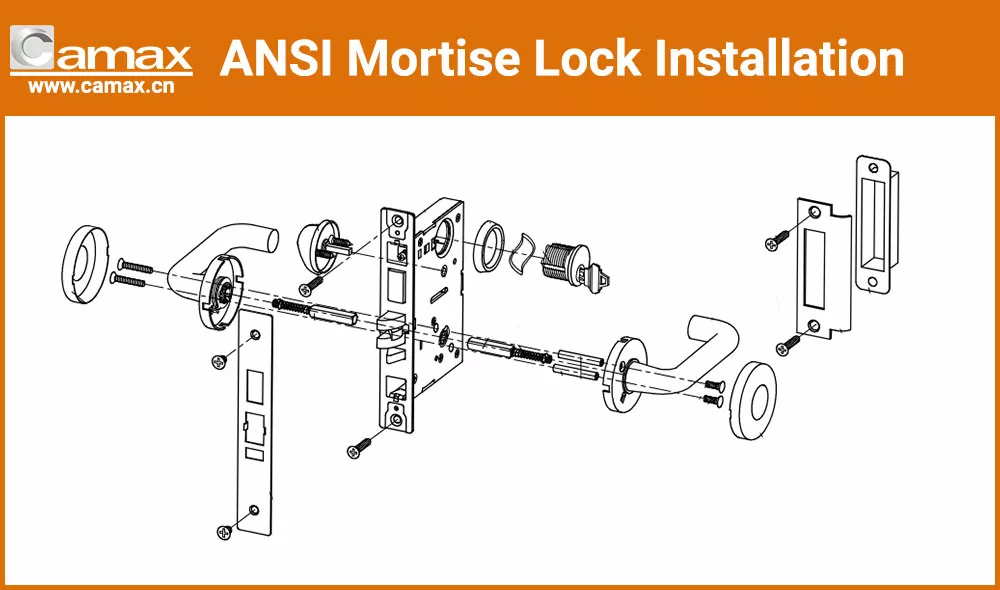
Contact Camax Hardware for Complete Product Catalog and Customized Quote
Choosing the right ANSI mortise lock function is crucial for enhancing both security and convenience in your commercial building. By understanding the different lock functions and evaluating your building’s needs—such as the level of security required, traffic flow, and emergency accessibility, you can select the most appropriate lock for each door.
Whether you’re securing office spaces, classrooms, or storage rooms, selecting the correct lock function helps ensure smooth operations while maintaining high security. Camax’s ANSI mortise lock options offer top-tier solutions for your commercial projects, with various functions and certifications to meet your specific needs.
For personalized advice or to explore Camax's ANSI mortise lock solutions, contact Camax Hardware today and ensure your commercial building is as secure as it is functional.
Need help? Contact Camax for a quote!
Discover Camax's door & window hardware with ANSI/BHMA/UL/CE certification today!


